Discover the Best Board Games for Every Player

Top 10 Family Puzzle Games
Family puzzle games are a great way to bring everyone together while encouraging teamwork, problem-solving, and communication. From quick, casual games to immersive, story-driven experiences, there’s something for every age group and interest. Here’s a quick look at the best family-friendly puzzle games:
- Bandido: Cooperative card game for ages 6+, focusing on teamwork and strategy. Quick 15–20 min playtime.
- Unlock!: Escape room-style game with app integration for ages 10+, offering immersive 60-minute challenges.
- Mansions of Madness: A horror-themed, app-driven game for ages 14+, perfect for long 2–3 hour sessions.
- Tesseract: Dice-manipulation puzzle for ages 14+, with 30–60 min playtime.
- Zingo: Simple matching game for kids 4+, ideal for 10–20 min family fun.
- ThinkFun Gravity Maze: STEM-focused marble maze for ages 8+, great for short 10–20 min challenges.
- SET: Visual pattern recognition game for ages 6+, suitable for 20–30 min sessions with large groups.
- Rush Hour: Single-player sliding puzzle for ages 8+, with quick 5–15 min challenges.
- Sunrise Ranch Jigsaw Puzzle: Classic jigsaw for ages 8+, offering 45 min to 2 hours of collaborative fun.
- Arranger: Grid-sliding puzzle for ages 8+, with 20–40 min playtime.
These games cater to various preferences, from fast-paced fun to in-depth problem-solving, and are designed to include players of all ages. Whether you’re looking for a quick activity or a dedicated game night, these options make family time more engaging.
Quick Comparison
| Game | Age Range | Player Count | Type | Duration | Price |
|---|---|---|---|---|---|
| Bandido | 6+ | 1–4 | Cooperative, tile-laying | 15–20 min | $10–$15 |
| Unlock! | 10+ | 1–6 | Escape room, app-based | 60 min | $30–$40 |
| Mansions of Madness | 14+ | 1–5 | Horror, app-driven | 120–180 min | $90–$110 |
| Tesseract | 14+ | 1–4 | Dice-manipulation | 30–60 min | $40–$50 |
| Zingo | 4+ | 2–6 | Matching | 10–20 min | $20–$25 |
| ThinkFun Gravity Maze | 8+ | 1+ | Logic, marble maze | 10–20 min | $25–$30 |
| SET | 6+ | 1–20 | Visual, pattern-based | 20–30 min | $12–$15 |
| Rush Hour | 8+ | 1 | Sliding puzzle | 5–15 min | $20–$25 |
| Sunrise Ranch Puzzle | 8+ | 1–6 | Jigsaw | 45–120 min | $15–$25 |
| Arranger | 8+ | 1–4 | Grid-sliding | 20–40 min | $20–$30 |
For more details, check out the descriptions above and find the perfect game for your next family night.
Bored of jigsaws? Here are 10 types of Puzzle Board Games to play instead! Top 10 Mechanisms
1. Bandido
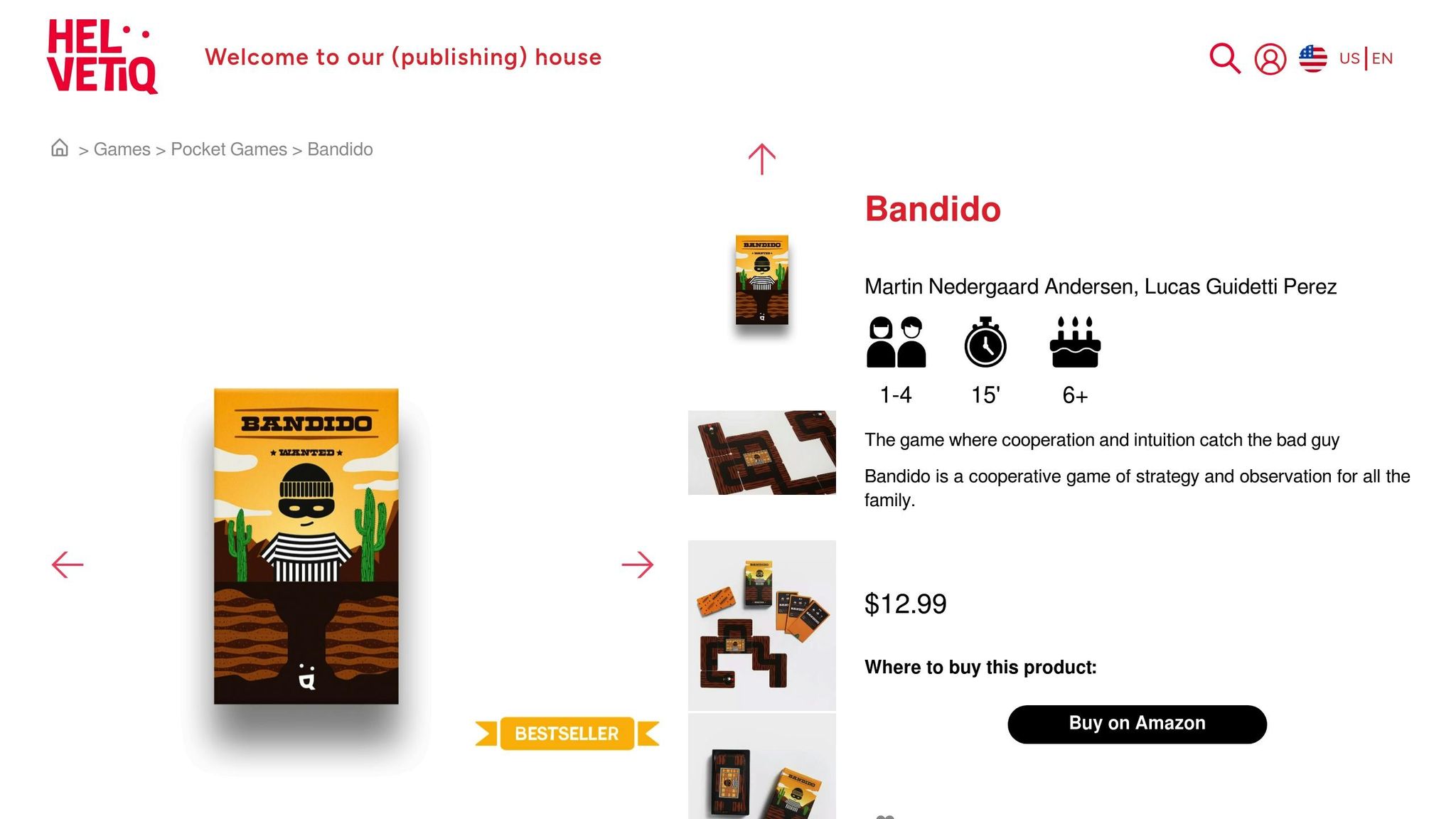
Bandido is a cooperative card game that puts players to the test as they try to stop a clever bandit from escaping through a maze of tunnels. Created by Brain Games, this game focuses on teamwork, challenging families to work together to block all possible escape routes.
Age Suitability
Bandido is designed to be enjoyed by players ages 6 and up, making it a fantastic choice for both kids and adults. Its straightforward gameplay and visual elements make it easy for younger players to understand the goal of blocking tunnels without getting bogged down by complicated rules. Plus, it’s a great way to help kids build skills like spatial reasoning, strategic thinking, and teamwork.
Player Count
The game works for 1 to 4 players, offering flexibility whether you’re playing solo or with family. This range makes it perfect for quiet one-on-one sessions or lively group play during family game nights.
Core Puzzle Mechanic
The heart of Bandido lies in its strategic card placement. Players analyze the growing network of tunnels and carefully choose where to place their cards to block the bandit’s escape paths.
Playtime
A typical game lasts 15–20 minutes, which makes it ideal for busy evenings or when you want to squeeze in a quick activity. The short rounds keep everyone engaged, and you can easily play multiple games in one sitting. With over 100,000 copies sold worldwide as of 2024 and an impressive average rating of 4.5 out of 5 stars, Bandido has earned its place as a go-to option for cooperative family fun.
2. Unlock!
Unlock! brings the thrill of escape rooms right into your home, combining physical cards with a companion app for an immersive, story-driven experience. This cooperative puzzle game challenges families to crack codes, solve mysteries, and race against the clock.
Age Suitability
Tailored for ages 10 and up, Unlock! is a great choice for families with older kids, teens, and adults. While the puzzles can be tricky for younger players, adults can guide the experience, ensuring everyone feels included and engaged.
Player Count
Unlock! works best with 2 to 4 players, though it can accommodate up to 6 participants or even be played solo. In larger groups, families can form teams or take turns, keeping the gameplay organized and fun for everyone.
Core Puzzle Mechanic
What makes Unlock! unique is its clever combination of card-based puzzles and a companion app. Players search for clues on the cards, combine objects, and input codes into the app to unlock new areas and progress the story. The app also offers hints when players hit a roadblock, making teamwork and problem-solving central to the experience.
A fan-favorite scenario, "Unlock! Squeek & Sausage," features a quirky cartoon villain and lighthearted puzzles, showcasing how approachable and fun the game is for first-timers. The blend of timed challenges and creative storytelling keeps players hooked for the entire session.
Playtime
Each Unlock! scenario is designed to last about 60 minutes, with a built-in timer adding a sense of urgency. It’s no surprise the game boasts an impressive 4.6-star rating on Amazon!
3. Mansions of Madness
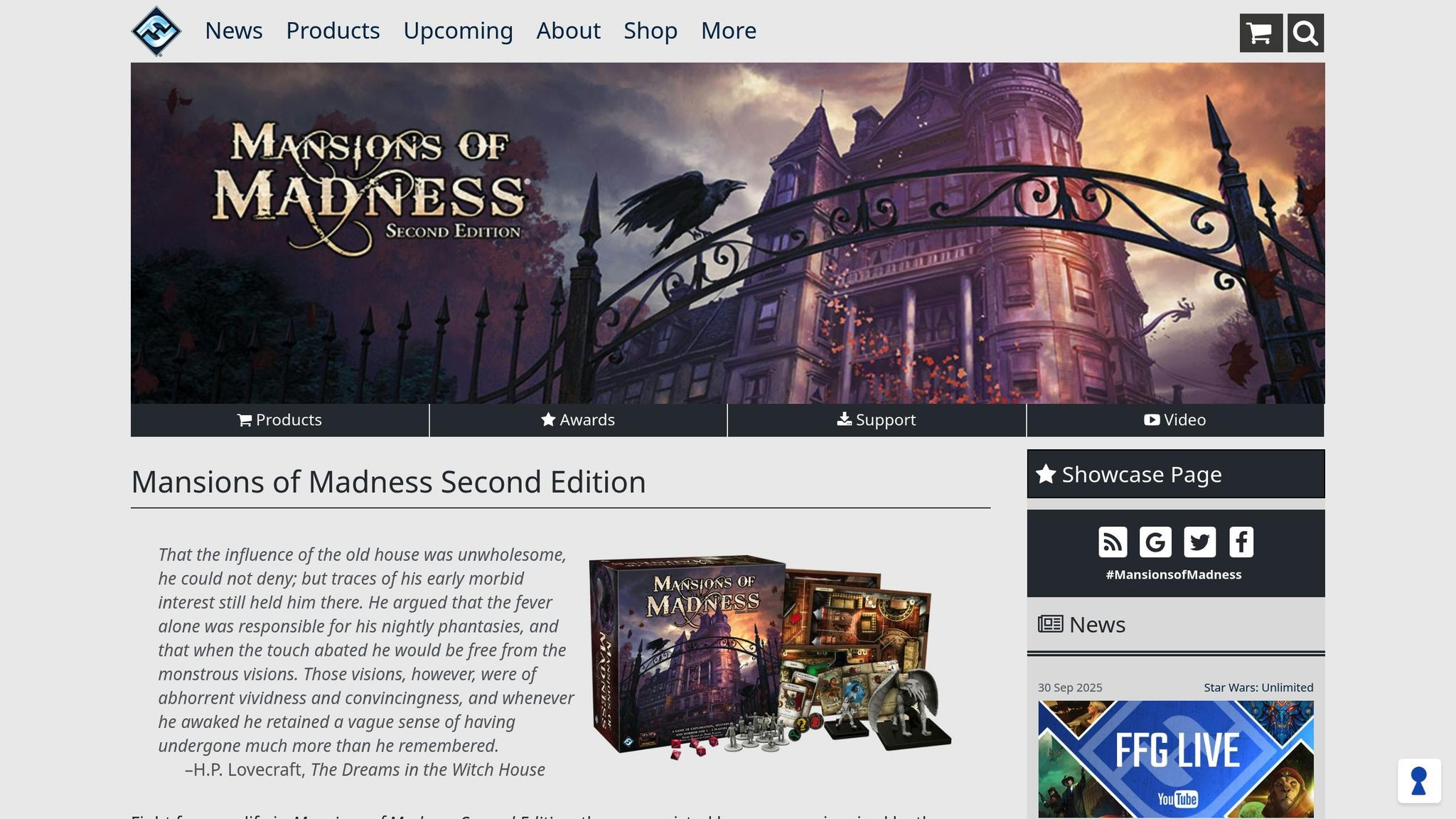
Mansions of Madness combines cooperative gameplay with the chilling atmosphere of horror storytelling. Set in the eerie world of H.P. Lovecraft's Cthulhu Mythos, this app-driven board game transforms players into investigators unraveling mysteries in haunted mansions.
What makes this game stand out is its seamless mix of traditional board gaming and digital storytelling. The companion app acts as the game master, guiding the narrative, randomizing events, and keeping track of your team's actions as the story unfolds. This dynamic approach ensures that every playthrough feels fresh and unpredictable.
Age Suitability
Designed for ages 14 and up, Mansions of Madness is ideal for families with teens or groups of adults looking for a more intricate gaming experience. The age recommendation reflects the game's complexity, its atmospheric horror themes, and the advanced problem-solving required to navigate its scenarios. While its Lovecraftian horror elements may be too intense for younger players, teens and adults will enjoy the deep storytelling and strategic challenges.
Player Count
With support for 1 to 5 players, the game offers flexibility to suit different group sizes and preferences. Whether you're playing solo or with a group, the app adjusts the difficulty and narrative complexity based on the number of players. Larger groups can enjoy the added layer of teamwork, as players collaborate to share clues, solve puzzles, and make critical decisions under pressure. This adaptability ensures a dynamic and engaging experience for everyone.
Core Puzzle Mechanic
At the heart of Mansions of Madness is its innovative puzzle system, which weaves logic puzzles, riddles, and spatial challenges into the unfolding story. Players might encounter symbol-matching puzzles, cryptic riddles, or sliding tile challenges to uncover hidden passages and secrets.
The app integration takes these puzzles to another level, incorporating multimedia elements, automatically tracking progress, and adapting the narrative based on your decisions. This makes puzzle-solving feel like an organic part of the story rather than a series of disconnected tasks, enhancing the immersive experience.
Playtime
A typical session of Mansions of Madness lasts 2 to 3 hours, making it a great choice for a dedicated game night. The longer playtime allows players to fully immerse themselves in character development, tackle intricate puzzles, and enjoy the layered storylines. While the exact duration can vary based on factors like scenario complexity, group size, and familiarity with the rules, the time investment is rewarded with memorable moments and rich storytelling that players will talk about long after the game ends.
4. Tesseract

Tesseract is a puzzle game that thrives on teamwork and pattern matching, making it a great choice for families looking to work together on a challenge. Let’s dive into what makes it a standout option for group play.
Age Suitability
Tesseract is designed for players 14 and older, making it an excellent fit for teens and adults. The puzzles are crafted to engage older players with their complexity, while younger kids might find some of the challenges a bit tricky to tackle.
Player Count
The game accommodates 1 to 4 players, allowing for solo play or group collaboration.
Core Puzzle Mechanic
At its heart, Tesseract focuses on cooperative pattern matching, requiring players to work together to solve puzzles. Each session typically lasts 45 to 60 minutes, offering just the right amount of time for an engaging and rewarding experience.
5. Zingo
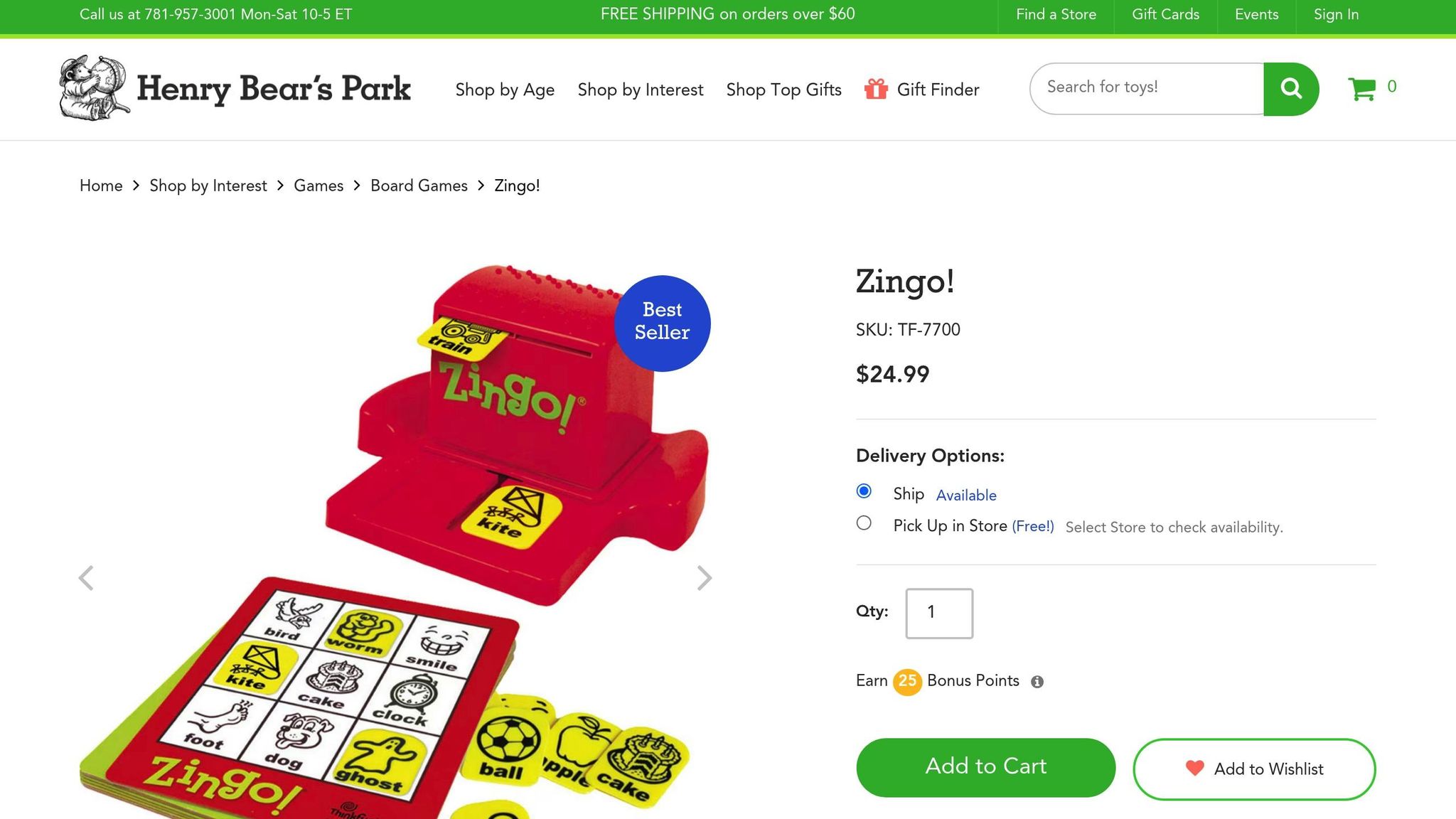
Zingo is a puzzle game designed to bring families together with its fast-paced and engaging gameplay. It’s perfect for all ages, making it a go-to choice for family game nights.
What makes Zingo stand out is its simple yet interactive design. It works well with different group sizes and skill levels, offering just the right mix of friendly competition and teamwork. The game creates a lively and relaxed vibe, making it easy for everyone to dive in and enjoy.
Beyond the fun, Zingo encourages family bonding through shared problem-solving and collaboration. It’s the kind of game that turns an ordinary evening into a memorable experience.
Want to discover more about Zingo and other family-friendly puzzle games? Check out Brain-Games.lv/en/. Up next, we’ll take a look at another puzzle game that puts your strategy and teamwork to the test.
6. ThinkFun Gravity Maze
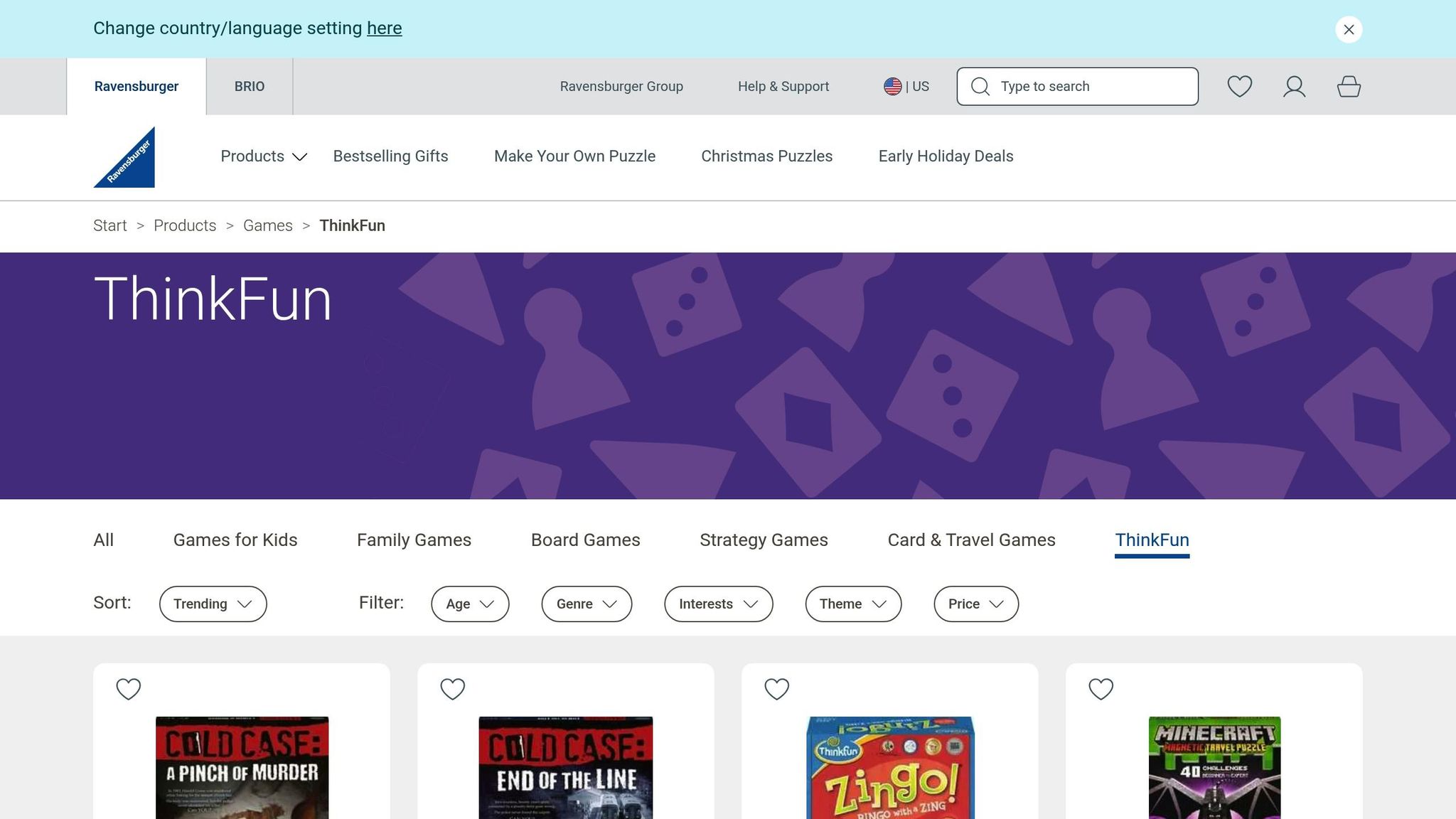
ThinkFun Gravity Maze brings a fresh twist to brain-teasing fun with its 3D physics puzzles. Recognized with the Toy of the Year Award, it’s celebrated for its engaging gameplay and its ability to spark interest in STEM learning.
What sets this game apart is its hands-on approach to problem-solving. Players use translucent towers to construct marble runs, creating gravity-powered pathways that guide a marble from start to finish. Each challenge demands careful planning and spatial reasoning, making it an exciting test of logic and creativity.
Age Suitability and Player Count
Gravity Maze is designed for players aged 8 and up, making it a perfect choice for solo play or family game nights. While younger children might struggle with the complexity of three-dimensional problem-solving, older kids and adults will find the increasing difficulty of the puzzles both stimulating and rewarding. Families can take turns solving challenges, collaborate on the trickiest setups, or even compete to see who can crack the solution fastest.
Core Puzzle Mechanic
At the heart of Gravity Maze is its marble run logic system. Each challenge card presents a setup where players must arrange specific towers to create a functional marble path. Success requires visualizing the marble’s movement, predicting how gravity will guide it through the towers, and experimenting with different configurations until the solution clicks into place.
For example, a challenge might task you with using three particular towers to guide the marble along a fixed path, with only certain positions available on the board. This trial-and-error process sharpens critical thinking and spatial skills while delivering the satisfaction of watching the marble complete its journey.
Playtime
Individual puzzles in Gravity Maze typically take 5 to 15 minutes to solve, making it a flexible option for quick play sessions or extended game nights. A full session, where players tackle multiple challenges, usually lasts 15 to 45 minutes, depending on the group’s pace and the number of puzzles attempted. With 60 challenge cards included, the game offers plenty of replayability and fits seamlessly into any family gaming routine.
Ready to test your problem-solving skills? Check out ThinkFun Gravity Maze at Brain-Games.lv/en/. Up next, discover a game that transforms how you approach visual perception challenges.
sbb-itb-1ed942f
7. SET: The Family Game of Visual Perception
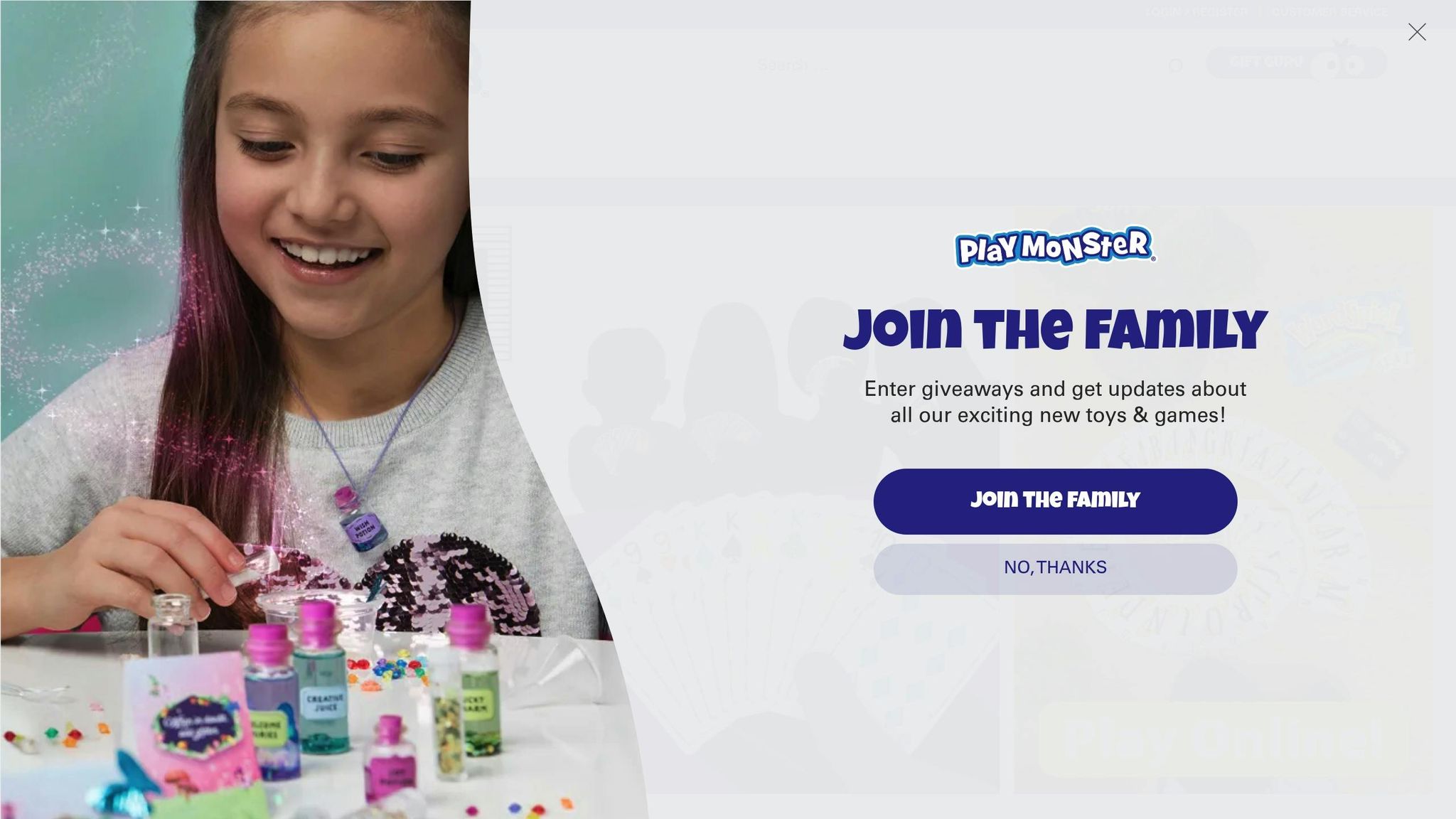
SET is a fast-paced card game that challenges players to spot patterns and make quick visual connections. It transforms simple shapes into a brain-teasing activity, encouraging the whole family to think about patterns and logic in new ways.
The game features 81 unique cards, each displaying symbols with four characteristics: shape (ovals, diamonds, or squiggles), color (red, green, or purple), number (one, two, or three), and shading (solid, striped, or open). The goal? Identify "sets" among the cards on the table. To win, you'll need both speed and strategy, keeping everyone on their toes.
A valid "set" consists of three cards where each attribute is either entirely the same or completely different across all three cards. For instance, a set could include cards that share the same color and shading but differ in shape and number.
Age Suitability and Player Count
SET is designed for players aged 6 and up. Younger participants may need a quick explanation of the rules, but once they grasp the concept, they can dive right in. The game works for any group size, making it perfect for family gatherings. Whether you're playing with two people or a large group, everyone participates at the same time, keeping the energy high and eliminating downtime.
One of the game's most delightful aspects is how players of different ages bring unique strengths. While adults might rely on logical strategies, kids often surprise everyone with their ability to spot patterns quickly. This creates an exciting, level playing field where victories feel equally earned.
Core Puzzle Mechanic
The heart of SET lies in its visual pattern recognition. Players scan the cards, looking for combinations where each attribute - shape, color, number, and shading - is either uniform or entirely different. This creates a unique challenge that blends analytical thinking with rapid visual processing. Some players might focus on one characteristic at a time, while others develop a knack for spotting patterns instantly, adding an element of quick decision-making to the mix.
Playtime
A typical game of SET lasts about 20–30 minutes, making it an ideal choice for family game nights. The rounds move quickly, with players constantly calling out sets, keeping the pace lively and engaging. The game wraps up naturally when no more sets can be found among the remaining cards, offering a satisfying conclusion.
Ready to test your skills? Check out SET at Brain-Games.lv/en/ and discover your next favorite logic puzzle!
8. Rush Hour
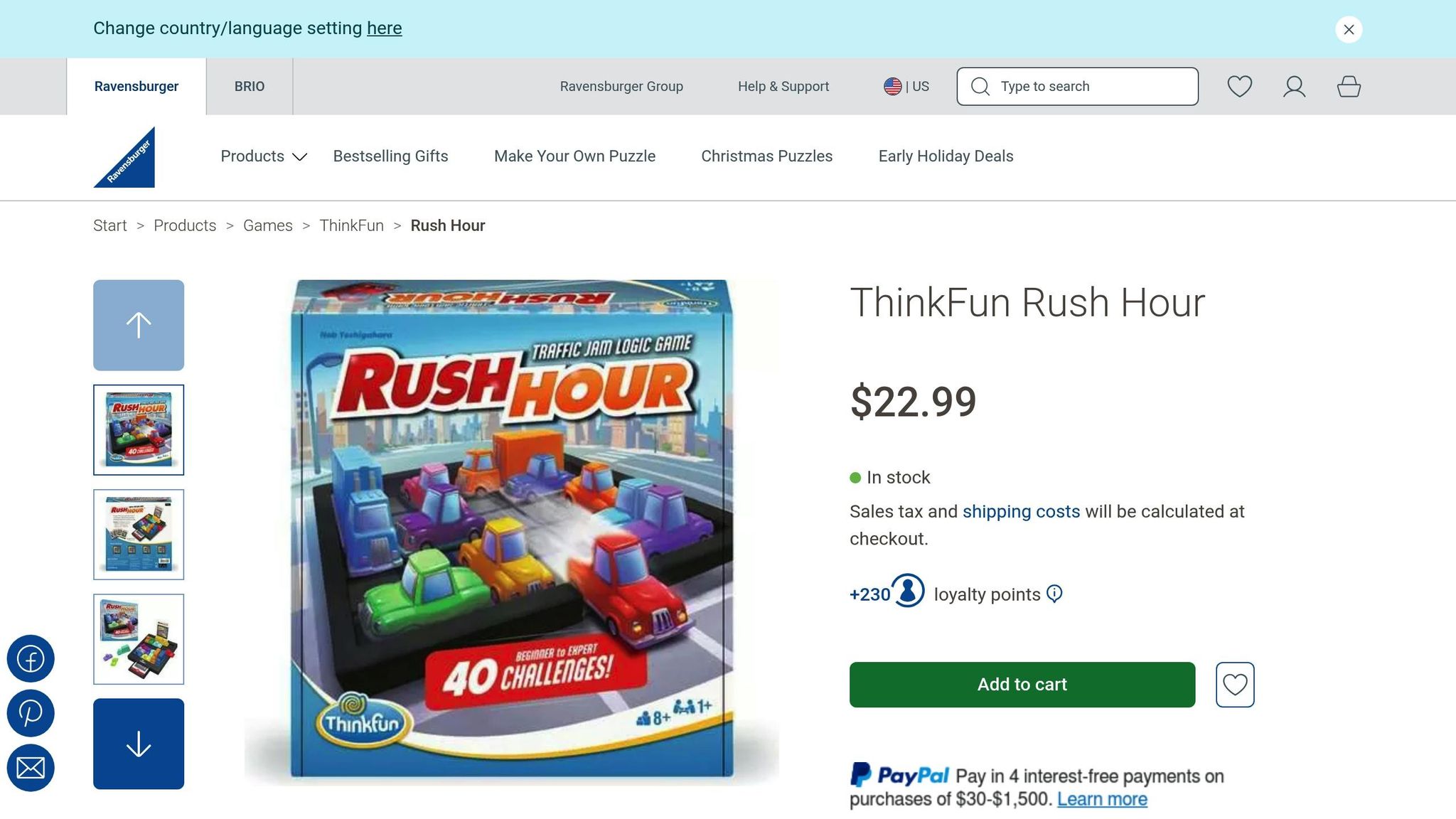
Rush Hour takes the frustration of traffic jams and turns it into an engaging sliding block puzzle that challenges your spatial reasoning. The objective? Help the red car escape a traffic-filled grid by sliding other vehicles out of its way. It’s a fun way to practice logical thinking while navigating a cleverly designed gridlock.
Age Suitability and Player Count
This game is perfect for anyone aged 8 and up, making it a hit with both kids and adults. While it’s designed as a single-player experience, it can easily become a shared challenge when tackled as a group. It’s a great option for family problem-solving or even casual teamwork.
How It Works
Rush Hour’s gameplay centers on sliding block mechanics. Vehicles can only move along fixed tracks, which means every move requires careful thought and planning. This step-by-step approach sharpens sequential thinking and helps players develop problem-solving skills that are useful in everyday life.
Playtime
Each puzzle takes about 5 to 15 minutes to solve, making it a quick and satisfying activity. Whether you’re looking for a short brain teaser or a series of puzzles to keep the fun going, Rush Hour fits seamlessly into family game nights or even as a solo break during a busy day.
Ready to test your skills? Check out Rush Hour at Brain-Games.lv/en/ and see if you can beat the gridlock!
9. Sunrise Ranch Jigsaw Puzzle
The Sunrise Ranch Jigsaw Puzzle brings the charm of rural life to your table with a beautifully detailed ranch scene featuring animals, barns, and rolling hills. This classic, screen-free activity encourages teamwork, sparks conversations, and hones cognitive skills. The intricate artwork evokes the warmth and nostalgia of ranch life, making it a hit with both kids and adults who love scenic, calming imagery. Perfect for families, it’s designed to suit players of varying skill levels.
Age Suitability
This puzzle is crafted for ages 8 and up, offering a balanced challenge for younger kids and seasoned puzzle enthusiasts alike. It’s a great way to introduce children to farm life and rural traditions while keeping them engaged. The size and complexity of the pieces are manageable for smaller hands, yet still engaging enough to captivate teenagers and adults.
Player Count
While it’s perfectly enjoyable as a solo activity for those quiet, reflective moments, the puzzle truly shines when shared with 2 to 6 players. Its design allows everyone to contribute at their own pace, letting each player bring their unique strengths to the table. Whether it’s a family night or a casual gathering, this puzzle fosters collaboration and shared accomplishment.
Core Puzzle Mechanic
The heart of the puzzle lies in visual perception and pattern recognition. Players work together to match colors, shapes, and intricate details, piecing together the serene ranch scene. Observing edges and subtle color variations becomes a group effort, encouraging communication as players share insights and strategies for tackling different sections of the puzzle.
Playtime
Depending on the number of pieces and the group’s experience, playtime typically ranges from 45 minutes to 2 hours. This flexibility makes it easy to fit into any family’s schedule. You can complete it in one enjoyable evening or spread the fun over several shorter sessions. Many families like to leave the puzzle out on a table, adding pieces here and there throughout the week whenever someone has a spare moment.
Want to bring the peaceful charm of the ranch into your home? Check out the Sunrise Ranch Jigsaw Puzzle at Brain-Games.lv/en/ and see why scenic puzzles continue to be a family favorite.
10. Arranger
Arranger brings a unique twist to puzzle games with its grid-sliding mechanic, where every move you make has a ripple effect across the board. Unlike traditional puzzles with fixed pieces, this game challenges you to think several steps ahead, as each slide reshapes the entire grid. It’s a test of strategy, foresight, and adaptability.
Age Suitability
Although there’s no official age rating, Arranger requires strong spatial reasoning and abstract thinking. While many family-friendly games cater to kids aged 8 and up, the deeper strategic elements here might be better suited for older children and adults. Families can gauge whether the game’s complexity aligns with their group’s preferences, making it a flexible option for various ages and settings.
Player Count
Whether you’re playing solo or with a group, Arranger delivers an engaging experience. Solo players can enjoy the challenge of mastering the puzzles independently, while groups can collaborate, brainstorm, and strategize together for a lively game night. Its dynamic gameplay encourages teamwork and shared problem-solving.
Core Puzzle Mechanic
The central mechanic of Arranger revolves around sliding rows and columns within a grid. Each move triggers a chain reaction, affecting the entire board. Success requires visualizing how a single action will impact the grid as a whole, making every decision a crucial part of your strategy.
Playtime
The length of each game depends on the complexity of the puzzle. It’s designed to accommodate both quick, casual sessions and longer, more immersive game nights, offering flexibility to fit your schedule.
Ready to test your skills? Explore Arranger at Brain-Games.lv/en/ and see why puzzle enthusiasts are hooked on its grid-based challenges.
Game Comparison Chart
Here's a handy chart to help you quickly compare the key details of various puzzle games and find the best fit for your next game night.
| Game | Age Range | Player Count | Puzzle Type | Game Duration | Price Range |
|---|---|---|---|---|---|
| Bandido | 6+ | 1–4 | Cooperative, tile-laying | 15–20 min | $10–$15 |
| Unlock! | 10+ | 1–6 | Cooperative, escape room, app | 60 min | $30–$40 |
| Mansions of Madness | 14+ | 1–5 | Cooperative, narrative, logic, app | 120–180 min | $90–$110 |
| Tesseract | 14+ | 1–4 | Cooperative, dice-manipulation | 30–60 min | $40–$50 |
| Zingo | 4+ | 2–6 | Matching, word | 10–20 min | $20–$25 |
| ThinkFun Gravity Maze | 8+ | 1+ | Logic, marble maze | 10–20 min/challenge | $25–$30 |
| SET | 6+ | 1–20 | Visual perception, pattern | 20–30 min | $12–$15 |
| Rush Hour | 8+ | 1 | Logic, traffic jam | 10–20 min/challenge | $20–$25 |
| Sunrise Ranch Jigsaw Puzzle | 8+ | 1+ | Jigsaw puzzle | 30–60+ min | $15–$25 |
| Arranger | 8+ | 1–4 | Spatial, logic | 20–40 min | $20–$30 |
This chart highlights key differences to guide your decision-making. Many of these games emphasize cooperative play, making them ideal for families who enjoy working together as a team.
For family gatherings - especially during holidays like Thanksgiving or winter breaks - games with lower age requirements and shorter playtimes often work best. Zingo is perfect for younger kids, while SET stands out as a flexible option that can accommodate anywhere from 1 to 20 players, making it a hit for larger groups.
Budget-wise, there’s something for everyone. Affordable options like Bandido and SET are great for families just starting their puzzle game collection. On the other hand, premium choices like Mansions of Madness deliver a rich, app-enhanced experience for those looking for longer, story-driven gameplay.
Game durations vary significantly, too. Shorter games like Rush Hour or ThinkFun Gravity Maze are great for keeping younger players engaged, while the immersive 2–3 hour sessions of Mansions of Madness cater to older kids and adults who love detailed, narrative adventures.
For more detailed insights on each game, check out the descriptions above. You can also explore these top picks for family game nights at Brain-Games.lv/en/, where you’ll see why these titles are consistently among the most popular puzzle games for families.
Conclusion
Puzzle games bring families closer together while sharpening critical thinking skills for all ages. They naturally foster meaningful interactions by encouraging teamwork, communication, and shared problem-solving - turning game nights into treasured family traditions.
These games are more than just fun; they nurture logic, creativity, and lifelong learning for everyone involved. Research shows that families who regularly play games together experience stronger communication and emotional bonds. This is why puzzle games continue to be a favorite choice for family activities.
What sets puzzle games apart is how accessible and inclusive they are. Many modern games come with adjustable difficulty levels and features designed to ensure everyone, regardless of age or skill, can join in and enjoy.
To make the most of these benefits, try setting up a regular game night. Rotate different types of puzzles to keep things fresh, and choose games that align with your family’s interests and age groups. Use these moments to practice patience, teamwork, and positive communication.
Looking to start a new tradition? Embrace puzzle night as a way to connect, challenge, and celebrate your family’s creativity. Brain Games offers a handpicked selection of family puzzle games. As a leading board game publisher and retailer in the Baltics, they’re dedicated to creating experiences that inspire, connect, and spark imagination. Check out their published games at Brain-Games.com or explore their full catalog of popular puzzle games worldwide at Brain-Games.lv/en/.
FAQs
How can I pick the best family puzzle game for different ages and interests?
When picking out a puzzle game for family time, think about the age group and interests of everyone involved. For younger kids, games with straightforward rules and fun, interactive themes are a great choice. Meanwhile, older kids and adults might prefer games that require a bit more strategy or offer a tougher challenge. Luckily, plenty of games are designed to appeal to all ages, making them ideal for family game nights.
Look for games that promote teamwork, spark creativity, or involve problem-solving to keep everyone engaged and entertained. Having a mix of games on hand can also add variety and keep game nights fresh and enjoyable!
Why should you include puzzle games in your family game nights?
Including puzzle games in family game nights is a great way to connect with loved ones while keeping the atmosphere lively and mentally engaging. These games are perfect for players of all ages, as they promote teamwork, spark problem-solving skills, and inspire creative thinking.
From cracking riddles to piecing together puzzles or solving intricate codes, these activities create shared moments of laughter and achievement, helping to strengthen family bonds in a fun and memorable way.
How can I make puzzle games fun and engaging for both kids and adults during family game night?
To make puzzle games fun for players of all ages, go for games that let you adjust difficulty levels or promote teamwork. Pick ones that blend strategy, creativity, and problem-solving to keep both kids and adults engaged. Games with colorful themes or interactive elements can also grab everyone’s attention and turn family game night into a memorable experience.






